Henbane
This poisonous member of the Solonacea family (nightshades, potatoes, tomatoes) is an unusual and striking non native. The dramatic creamy yellow and purple veined flowers are an unusual sight, most often found in old apothecary gardens but also in sand and gravel near the sea.
It is a biennial with a shrubby habit growing up to 1m tall. The whole plant is very hairy and very sticky and produces a nauseous odour!
| Hedgerow Type | |
| Common Names | Henbane, Black Henbane, Stinking nightshade, Hog's bean |
| Scientific Name | Hyoscyamus niger |
| Season Start | May |
| Season End | Sep |
Leaves
The green hairy leaves are between 10 and 20cm long with up to 3 lobes and a pointed tip. In the second year they lie in two rows on either side of the stem.
Flowers
The flowers are very distinctive being bell shaped, 2-5cm across with 5 petals. They are a creamy yellow colour with purple veining and a purple centre. They sit at the base of the leaves one on each side of the stem.
Fruit
The fruit resemble a small green tomato, 10-20mm in diameter, sitting at the base of a large calyx (cup like structure).
Seeds
The seeds are typical of the Solonacea family resembling those of the tomato i.e many small seeds.
Habitat
Most commonly found around old buildings, likely as part of a medicinal garden and in areas of shingle or gravel near the sea.
Possible Confusion
Nothing has flowers like this and even the tomato like fruit are green and sit in a deep cup so it is not likely to be mistaken for anything else.
Smell
Nauseous – thus the stinking nightshade name.
Frequency
Rare in the UK and northern Europe.
Other Facts
Henbane was and is used and grown for reputed herbal medicinal purposes. However it has long been associated with witches and hallucinations despite its lethal toxicity. Recoveries of seeds from a Viking grave have backed up suggestions that this could be the plant used to induce the rage of the berserkers in battle.

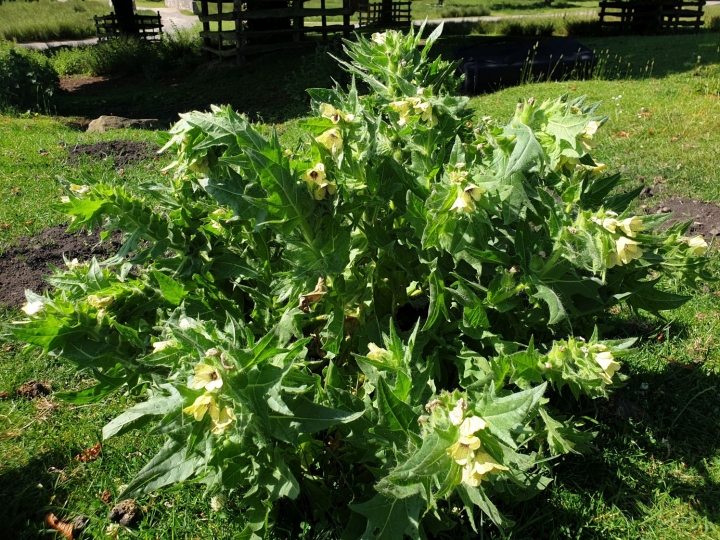
















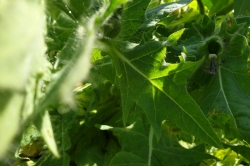
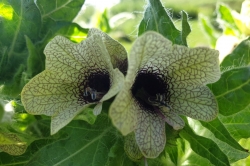
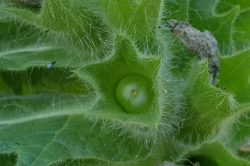
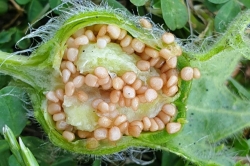
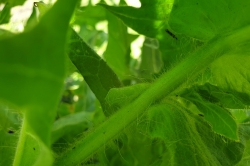
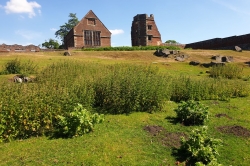





COMMENTS